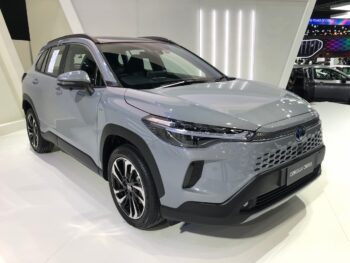The 2024 Honda Prologue, the first pure-electric SUV from the Japanese brand in the U.S., is coming to dealerships in Spring 2024. Positioned alongside the 2024 Passport in the Honda light truck range, the new electric SUV is a mechanical cousin of the 2024 Chevrolet Blazer EV. I’ve spent a good amount of time exploring the new electric mid-size SUV in person, and here are my first impressions of the same:
Design


The 2024 Honda Prologue has a stylish yet humble exterior, as is natural for a Honda. Seeing it in person just moments after the 2024 Chevrolet Blazer EV, I prefer the Prologue’s dapper and elegant look. Both SUVs feature a low and wide body for a grounded stance, but this trait was more pronounced in the Japanese model.
I like how the Prologue subtly embraces its identity as an EV, keeping things simple. For instance, at the front, the covered radiator grille doesn’t have fancy textures or a light bar; it’s a simple gloss black, concave surface. The headlamps flanking the grille have a quirky cluster and are consistent with other Honda SUVs currently on sale.
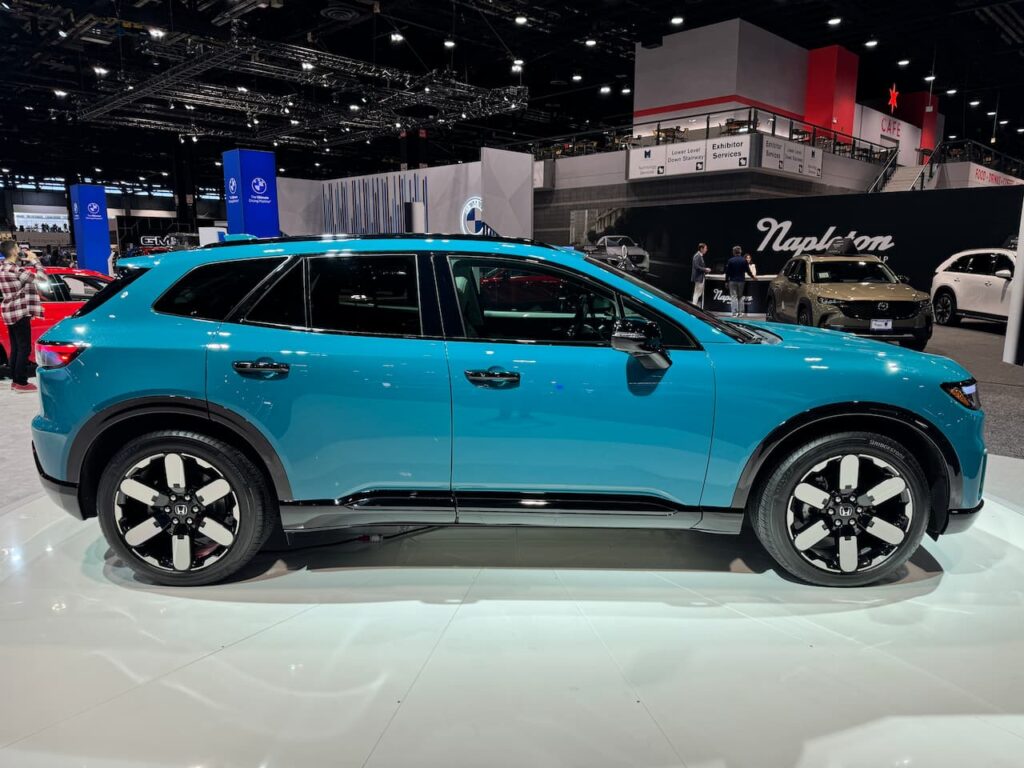
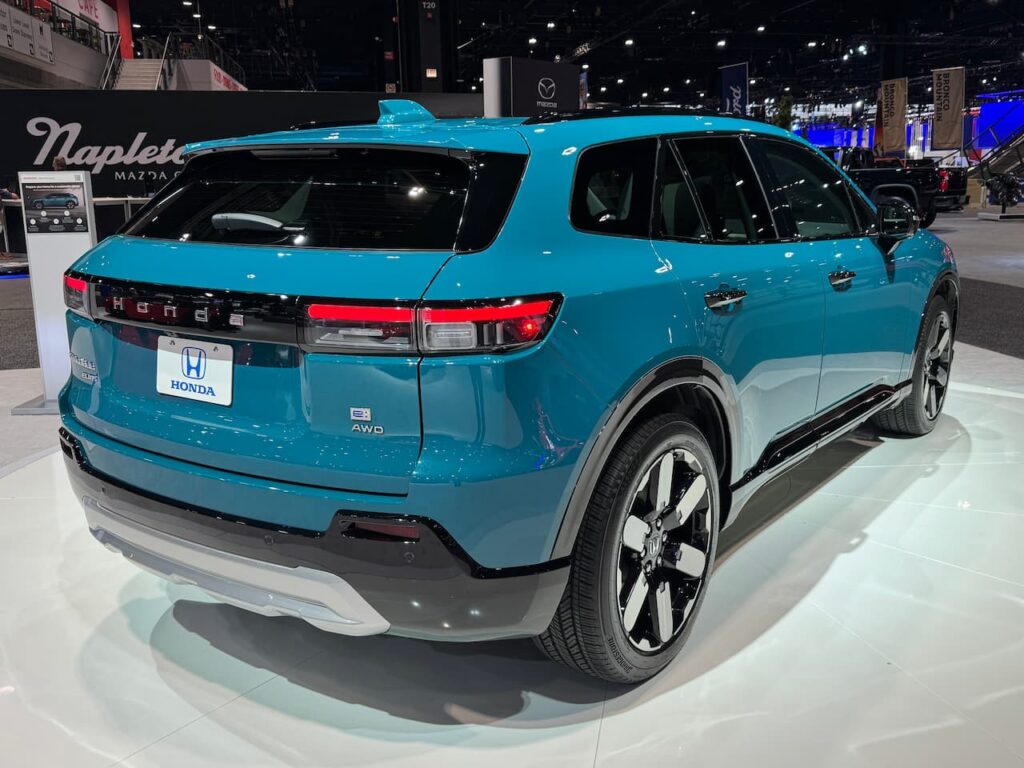
On the sides, I think the 21-inch six-spoke wheels lend the Prologue a funky look while underlining its athletic character. At the rear, the broad, boxy tail lamps underscore the width of the SUV, and I found them catchier than the block-lettered brand inscription, which is the first for a Honda.
After spending some time looking closely at the Prologue’s exterior, I noticed that the panel gaps were even and more tightly aligned compared to the CR-V parked nearby, for context. While the North Shore Pearl color of the Prologue is eye-catching and likely to draw attention at shows, I’m skeptical about it being the color of choice among American buyers.
Also See: 2024 Honda Prologue in the Pacific Blue Metallic color is a looker!
Interior

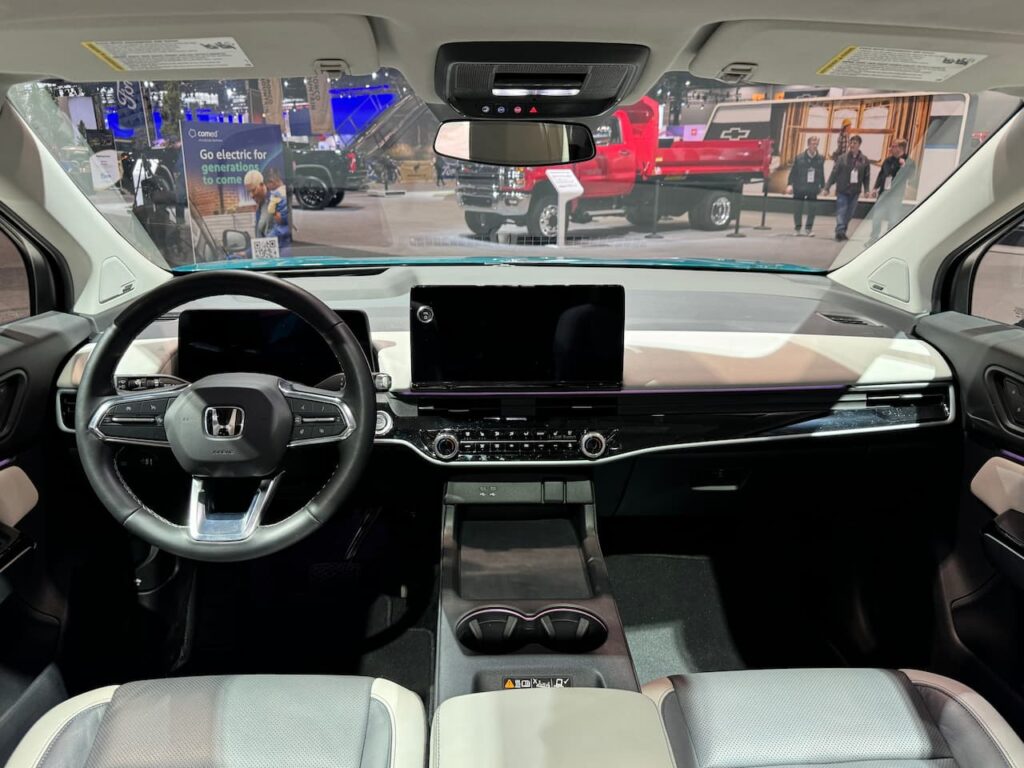
As much as I loved the 2024 Honda Prologue’s squat stance resulting from its low (and wide) body, I initially had concerns about the ease of ingress and egress, as well as the interior space, due to its design. I’m six feet tall, but entering and exiting the vehicle was easy for me, thanks to its high H-Point and raised floor.
Another point I was concerned about was forward visibility, as the windshield is visibly raked, and so, when I sat in the driver’s seat, I checked the all-around visibility. I didn’t see any issues here except for the base of the A-Pillar, which is quite thick. The rising beltline does cut into the greenhouse, but since the bench is pushed back, the quarter glass, which is fully visible, provides some relief.


As for space levels in the front, I felt the headroom was average. Under-thigh support was alright, and the lumbar support was good. The three-spoke steering wheel behind the hoodless, standard-fit 11-inch HD digital driver display had a manually adjustable column and felt grippy. Paddles behind the steering wheel allow the driver to adjust brake regen.
The 2024 Prologue features an 11.3-inch HD touchscreen infotainment system with native Google Maps and Google Assistant apps. More apps can be downloaded through the Google Play app store. Unlike in the 2024 Blazer EV, the infotainment system offers Apple CarPlay and Android Auto compatibility, including wireless feature.


I took a closer look at the center console, especially since Honda has talked a lot about the cabin’s functionality and utility. I liked the fact that the gear selector is a column-mounted shifter instead of a button or dial-operated unit located on the center console, as it frees up storage space here while also being easier to access.
In the second row, sitting right behind the driver’s seat that was adjusted for a six-foot-tall person, I had good legroom and knee room. I felt the default angle of the backrest was just about right for me. A recline function is available to sit in a more upright position. Lastly, I had just adequate headroom, with the glass roof letting in plenty of light to light up the cabin.
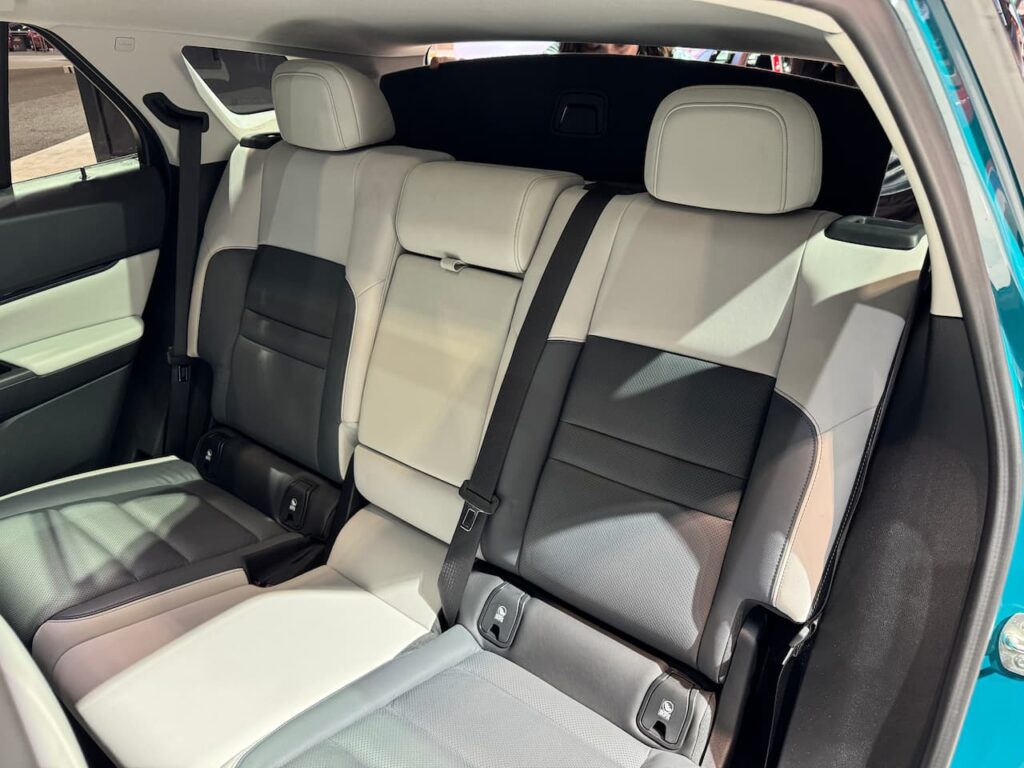

Honda Prologue ‘Elite’ variant looks striking in the North Shore Pearl color
Specifications
The 2024 Honda Prologue measures 192.0 in. in length, 78.3 in. in width, and 64.7 in. in height. Compared to the 2024 Honda Passport, it is 2.9 in. longer, 0.3 in. narrower, and exactly 7.5 in. lower. Its wheelbase is 10.9 in. longer – 121.8 in.
There’s up to 25.2 cu.-ft. of cargo space in the 2024 Prologue, expandable to 57.7 cu. ft. by folding the rear seatbacks flat. Plus, a hidden space under the cargo area floors offers 0.5 cu. ft. extra cargo space. Obviously, the longer Passport still holds the crown in this aspect.


Based on GM’s BEV3 platform, the 2024 Prologue uses an 85 kWh battery pack across the range. This battery pack supports charging at just up to 150 kW, and Honda estimates it’ll add 65 miles of range with approximately 10 minutes of charging.
The 2024 Prologue will be available in 2WD and AWD variants. The 2WD variant has one motor in the front, producing 212 hp and 236 lb.-ft. of torque. It delivers an EPA-estimated range of up to 296 miles. The AWD variant adds a second motor in the back, and its two motors together develop 288 hp and 333 lb.-ft. of torque. On a full charge, it can travel up to 281 miles.
Price
The prices of the 2024 Honda Prologue start at USD 48,795 and go up to USD 59,295, including a standard USD 1,395 destination charge.
Also See: Honda Prologue shown in Scarlett Red Metallic months before it hits U.S. dealers
TopElectricSUV says
The 2024 Honda Prologue is likely to be a great choice for customers who desire more comfort, better performance, more advanced technologies, and lower running costs compared to the 2024 Honda Passport. However, with its prices starting under USD 50,000, it is much more expensive.
2024 Honda Prologue FAQs
What is the 2024 Honda Prologue’s release date?
The Prologue will start reaching U.S. dealerships in Spring 2024.
What is the price of the 2024 Honda Prologue?
The prices of the 2024 Honda Prologue start at USD 48,795 (incl. USD 1,395 destination charge).
Which models will the Honda Prologue compete with?
Chevrolet Blazer EV, Kia EV6, Nissan Ariya, Ford Mustang Mach-E & Tesla Model Y.
An automobile engineer by training, I’ve analyzed the global car market since 2005, with a keen focus on EVs since 2008. My journey in online automotive publishing spans 16 years, during which I have reviewed cutting-edge automotive technologies and interviewed leading CEOs and vehicle developers from around the world.



